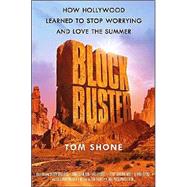It's a typical summer Friday night and the smell of popcorn is in the air. Throngs of fans jam into air-conditioned multiplexes to escape for two hours in the dark, blissfully lost in Hollywood's latest glittery confection complete with megawatt celebrities, awesome special effects, and enormous marketing budgets. The world is in love with the blockbuster movie, and these cinematic behemoths have risen to dominate the film industry, breaking box office records every weekend. With the passion and wit of a true movie buff and the insight of an internationally renowned critic, Tom Shone is the first to make sense of this phenomenon by taking readers through the decades that have shaped the modern blockbuster and forever transformed the face of Hollywood.
The moment the shark fin broke the water in 1975, a new monster was born. Fast, visceral, and devouring all in its path, the blockbuster had arrived. In just a few weeks Jaws earned more than $100 million in ticket sales, an unprecedented feat that heralded a new era in film. Soon, blockbuster auteurs such as Steven Spielberg, George Lucas, and James Cameron would revive the flagging fortunes of the studios and lure audiences back into theaters with the promise of thrills, plenty of action, and an escape from art house pretension.
But somewhere along the line, the beast they awakened took on a life of its own, and by the 1990s production budgets had escalated as quickly as profits. Hollywood entered a topsy-turvy world ruled by marketing and merchandising mavens, in which flops like Godzilla made money and hits had to break records just to break even. The blockbuster changed from a major event that took place a few times a year into something that audiences have come to expect weekly, piling into the backs of one another in an annual demolition derby that has left even Hollywood aghast.
Tom Shone has interviewed all the key participants -- from cinematic visionaries like Spielberg and Lucas and the executives who greenlight these spectacles down to the effects wizards who detonated the Death Star and blew up the White House -- in order to reveal the ways in which blockbusters have transformed how Hollywood makes movies and how we watch them. As entertaining as the films it chronicles, Blockbuster is a must-read for any fan who delights in the magic of the movies.








